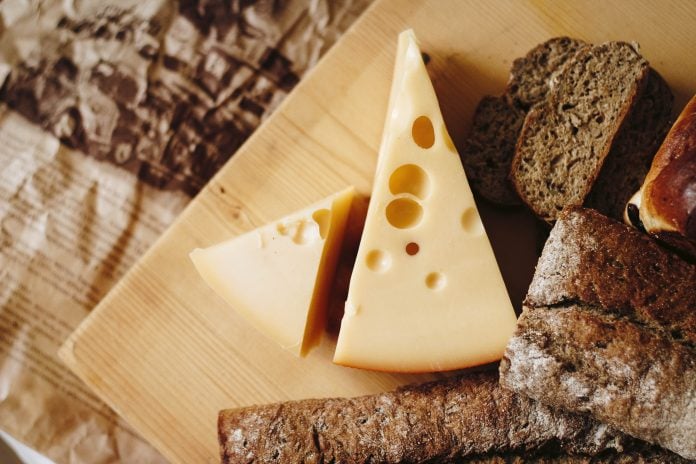Portuguese cheeses are well-known worldwide for their unique flavors and aromas. Luckily, if you’re a cheese lover planning a visit to Portugal, you will find a variety of high-quality cheeses everywhere, from large supermarkets and local mercearias to restaurants of all prices.
Just like wines, many kinds of Portuguese cheese have received protected designation of origin (DPO) labels. This certification is given to products made in specific regions using traditional techniques and ingredients. It ensures that the entire manufacturing process follows the rules regarding milk sourcing, animal breeds, and more.
If you’re getting a DOP cheese, you’re getting the real thing, which all the cheeses on this list fall under. However, keep in mind that Portugal also has other amazing cheeses that do not have the DOP label.
Let’s take a look at 8 Portuguese cheeses to taste on your next trip!
1. Serra da estrela cheese
Probably the most well-known cheese in Portugal, produced in the highest mountain range on the mainland, Serra da Estrela, a pastoral region. It is one of the beloved and most famous Portuguese cheeses. The name itself reveals its origin: it is produced in the mountains located in the center of the country.
To earn the DOP classification, the milk used in its production must come from the sheep raised in the region. The milking is done manually, and then the milk is heated, curdled, and cured with thistle flowers.
Due to its delicate flavor and creamy texture, it is often served with bread, toast, and crackers. Just make a hole in the top of the cheese, spread it with a knife, and enjoy!
By the way, don’t be surprised by the strong aroma of Serra da Estrela cheese, it is also one of the characteristics that make it special.
2. Azeitão cheese
Azeitão cheese also falls into the category of creamy cheeses, produced from sheep’s milk and thistle flowers. This cheese comes from Azeitão, a village located less than an hour away from the capital, Lisbon. Although it has a similar manufacturing process and appearance to Serra da Estrela cheese, it is lighter and has a slightly milder flavor.
It is usually served at room temperature. Simply cut it in half, then slice it into small pieces and let the creamy texture slowly ooze out. It pairs perfectly with homemade bread and a glass of red wine.
3. Transmontano goat cheese
The Transmontano goat cheese can only be made with raw goat milk from the Serra breed. The cheese itself has an intense white color and a hard consistency, maturing for at least sixty days at a medium to low temperature. It also has a slightly spicy flavor.
You can find the semi-cured variety, which is younger, and the older and harder variety, typically aged between ninety days to two years, often rubbed with olive oil or paprika. For an even more complete experience, pair this cheese with traditional Transmontano rye bread or some tasty jam!
4. Serpa cheese
From the Baixa Alentejo region, what makes Serpa cheese unique is the time it takes to age which is a period between 4 months to 2 years. Produced from raw sheep’s milk, its characteristics vary greatly.
Depending on the aging time, it can have a consistency that ranges from buttery to hard. Its spicy and slightly sweet touch comes from paprika. If it is creamy, try tasting it as a spread with some delicious Alentejo bread.
5. São Jorge cheese
Also known as Quejo da Ilha (Island Cheese), this cheese is produced on the Island of São Jorge in the Azores archipelago. São Jorge cheese is probably one of the most unique cheeses of all in Portugal, as its flavor sets it apart from other cheeses.
The highlight lies in its production using raw milk, unlike other cheeses made from pasteurized or filtered milk. The result is a semihard texture with a yellow shell and a lightly spicy flavor.
6. Évora cheese
Produced in Évora in the Alentejo, this cheese is made from raw sheep’s milk and has distinctive characteristics, particularly a smooth, yellow crust with small holes. The salty taste is balanced by a slight spiciness.
The maturation process takes 30 days for the semi-hard varieties and 90 days for the hard ones. The more aged it is, the more flavorful it becomes. This cheese is usually served in the Alentejo as an appetizer before the main meal.
7. Pico cheese
São Jorge cheese is not the only delicious cheese from the Azores, but also the cheese from Pico. Historical records show that it has been produced in the Azores since the 18th century.
Traditionally, it was made exclusively from raw cow’s milk, but nowadays there are mixed productions that also incorporate goat’s milk in the process. The curing process takes a minimum of twenty days, and the entire process has been passed down from generation to generation.
The cheese is semi-soft and quite fatty, with a distinctive salty taste and a strong aroma. It is usually served accompanied by Pico wine at the beginning or end of meals.
8. Nisa cheese
The Nisa cheese from Alto Alentejo is made from raw sheep’s milk and coagulated with thistle infusion. It undergoes a two-stage curing process: the first at a lower temperature and the second at a slightly higher temperature, never exceeding 14°C.
After one or two months of aging, the cheese becomes semi-hard and yellowish, with an intense flavor and a tangy finish. The production of this cheese remains purely artisanal to this day.
It’s perfect for snacking while enjoying a classic Alentejo wine. It is also commonly used in the preparation of quiches and traditional dishes.


